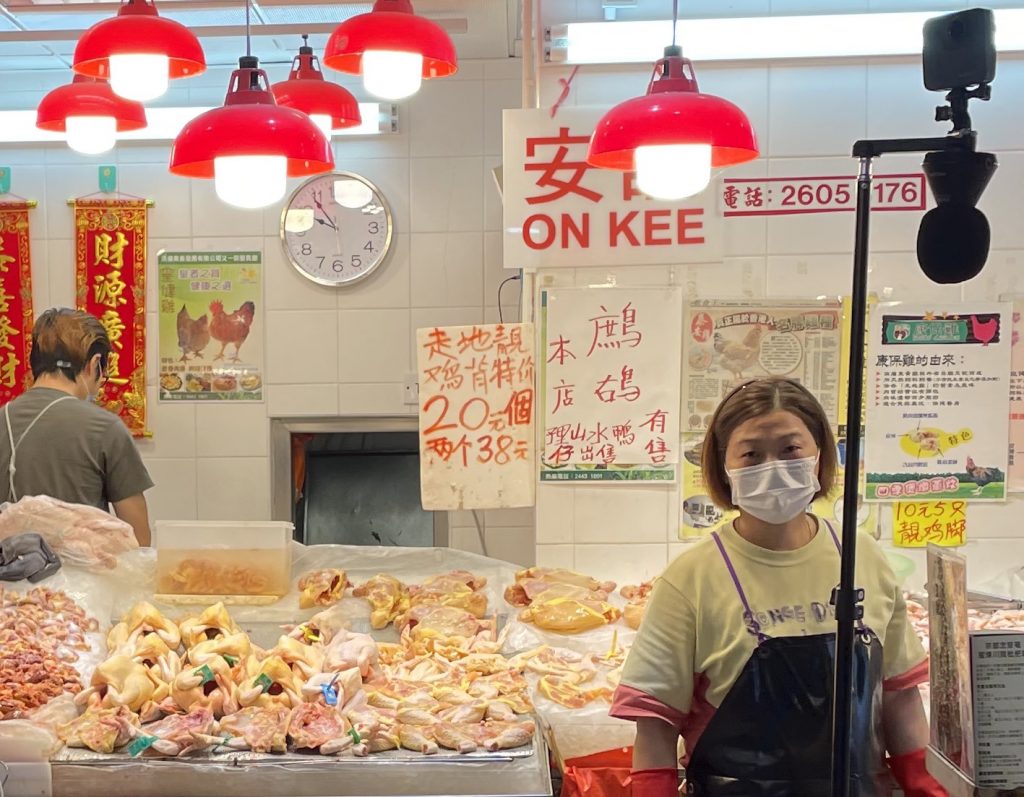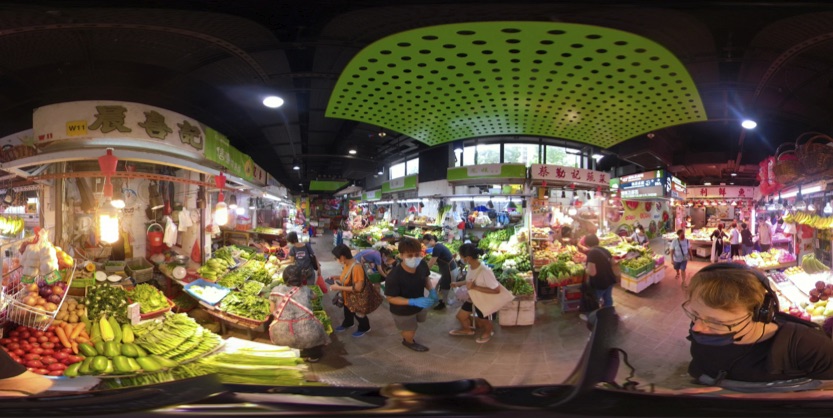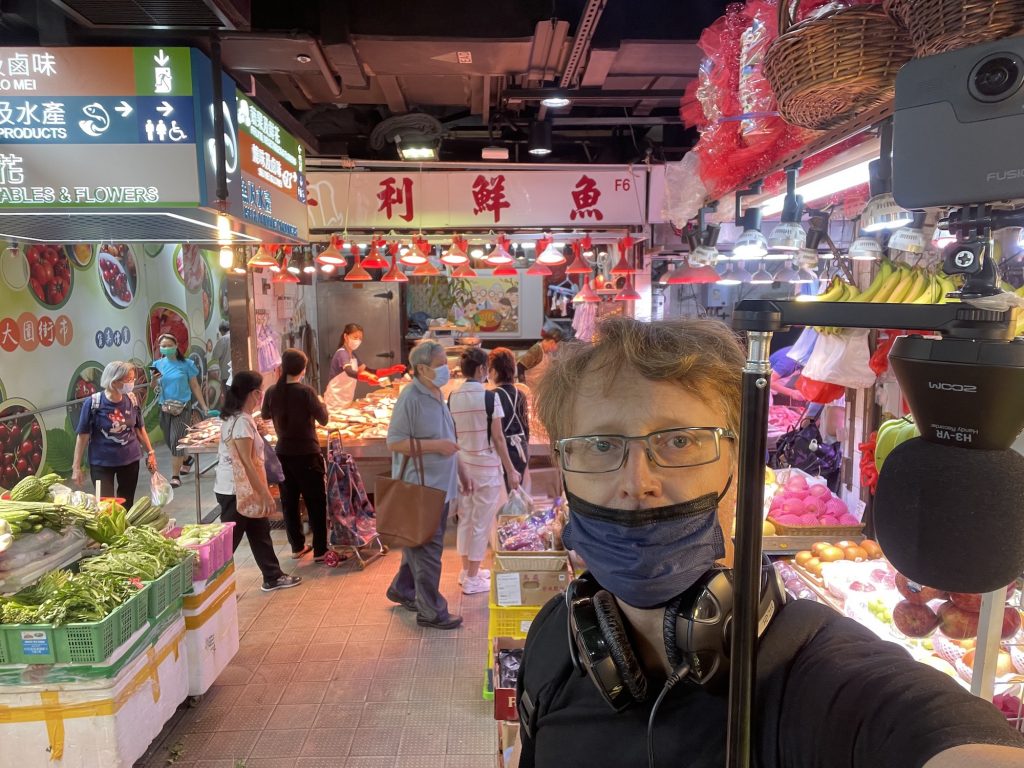Multimodal Hong Kong
Documenting Sensory Cultural Heritage through Soundscape and Smellscape.
GRF #11605622, 2022/23
PI :: PerMagnus Lindborg (City University of Hong Kong)
Co-Is :: Francesco Aletta (University College London, UK), Kongmeng Liew (Nara Institute of Science and Technology, Japan), Yudai Matsuda (CityU, HK), Jieling Xiao (City University of Birmingham, UK).
Project website :: http://soundlab.scm.cityu.edu.hk/mmhk/

Abstract
The sensory cultural heritage, combining tangible and intangible heritage, creates identity and cohesion in a community. In urban research, analysis of everyday-ish and informal customs typically rely on visual images, texts, and archival materials, to describe the multifarious aspects of culturally significant places and practices. By contrast, the acoustic environment is often not part of the narrative, and very rarely is the olfactory environment recorded. Given the contemporary context of rapid and profound transformation in Hong Kong, essential threads of the city fabric risk being neglected, and might even disappear before they can be documented. Can we really claim to know urban places without thoroughly considering, and documenting, the sensory cultural heritage represented by sounds and smells?
Our project seeks to preserve the threatened environment of some of Hong Kong’s signature sites and create a more accurate and richer understanding of culturally important places, rituals, and social practices, allowing greater appreciation of the heritage. In the meantime, this project aims to shed light on the crossmodal relationships between urban landscape, soundscape, and smellscape.
We propose a multimodal research approach that takes sound and smell as core components of the immersive urban experience. The project will document a large sample of characteristic sites in Hong Kong, focusing on places for Street food (街頭小食), Chinese Temples (寺廟 [佛祖, 天后…]), and Wet markets (傳統市場). The database will be open-access via a dedicated project website, connecting with recently initiated international soundscape–smellscape projects. It will contribute to the current need for detailed documentation of the local cultural heritage; support interdisciplinary collaborations; be a significant resource for future longitudinal studies of urbanism in Hong Kong; and a reference point for cross-cultural studies with other cities.
Methodology-wise, we will develop a capacity to systematically collect and analyse data from complex physical environments, integrating sonic and olfactory measurements with video capture and narratives. Field data will be both objective and subjective, to include 360 ̊ video, 3D audio (Ambisonics), and ‘smellprints’ (gas chromatography-mass spectrometry analysis of air samples), as well as sensory walks with observers making structured annotations of the perceived visual, auditive, and olfactory environment, and interviews with stakeholders. The database generated in the project will serve further research in environmental psychology, multimodal perception, and sensory integration. It will also prepare the ground for future multisensorial applications in virtual tourism, art, games, film, and spatial design at museums, galleries, and commercial venues.
Opportunities
Are you interested to participate in the MMHK project? We are seeking to hire Research Assistants (full- or part-time, must have a completed first degree). If you are a current CityU student (School of Creative Media or Department of Chemistry, UG or PG), check out assistanships possibilities. If you are planning your final-year Graduation Thesis, come and do your research or portfolio work with us! Contact, see also other SoundLab opportunities.

Research context
In cities such as Hong Kong, there is a constant struggle between human traditions, forces of technologically driven desires (e.g. ‘smart cities’), and natural contextual constraints (e.g. climate change). The sites that a community values combine physically persistent and ephemeral qualities. As discussed in our recent study, urban places that are culturally valued typically present an “intertwined tangible-intangible duality, expressed both as a physical construction and as a set of social, traditional practices” (Lenzi, Sabada, & Lindborg 2021).
In the present proposal, we adopt the notion of ‘sensory heritage’. France has recently adopted a law that explicitly aims at protecting culturally valuable sounds and smells (patrimoine sensoriel sur les sons et odeurs; see Morel-à-L’Huissier 2020). The background to this concept lies in tangible heritage which emphasises “architecture, their homogeneity or their place in the landscape” (UNESCO 1972), and intangible cultural heritage [ICH], which is “any non-corporeal manifestation of tradition-based creativity [that reflects] the community’s social or cultural identity. It includes… the social, intellectual and cultural processes that… have made possible the development of a distinct cultural tradition whose preservation and protection is important…” (UNESCO 2021b p. 5). The latter is typically related to rituals, festive events, and crafts within a community, yet it is not so much about the cultural manifestations themselves but rather the wealth of knowledge and skills being transmitted (UNESCO 2003–). Moreover, social enactment is an “essential and defining aspect of intangible heritage, in the sense that this heritage exists and is sustained through the acts of people” (UNESCO 2021a p. 2). Soundscape is recognised in UNESCO (2017, p. 57)
However, the tangible/intangible framework is not without critique (see e.g. Caust & Vecco 2017) and the dichotomy enshrined in these conventions may appear artificial in the way it is based in an entrenched hierarchisation of the senses. It has proved easier to find international agreement about values that can be perceived with the eyes, over those that can only be appreciated from touch or hearing, and certainly over those which come to us via the ‘lower’ olfactory and gustatory senses. How can we frame a research project to avoid conceptual challenges of this kind? Firat (2020) argued that sounds, and acoustics in general, are in fact tangible, because “any sensory modality which can be preserved with digital methods should be regarded as tangible heritage” (p. 3). His socio-historic analysis argued that insisting on this dichotomy perpetuates a Western worldview dominating the Eastern; the former is oculo-centric, while in the latter, imagination is “beyond the visual” or any other sense (p. 5), noting that “ephemerality is one of the main attributes of auditory [and] olfactory… cultural objects, which cause them to be considered as abstract phenomena and associated with the intangible heritage” (p. 9).
For the proposed project we avoid the tangible/intangible dichotomy altogether by adopting the notion of sensory heritage (Morel-à-L’Huissier 2020). Furthermore, we are influenced by the Burra Charter’s definition of cultural significance as the “sum of aesthetic, historic, scientific and social values”, in particular because ‘aesthetic value’ here includes the “smells
and sounds associated with the place and its use” (ICOMOS 1999 p. 120). A practical example is given by Bembibre and Strlič (2017) who discuss smellscape as a constituent part of place-making in cultural heritage sites as well as its use in museum exhibition design, and soundscape as cultural heritage is discussed by Jordan (2017; also Jordan & Fiebrig 2020).
Blogs
Database
(pilot collection) :: : https://docs.google.com/spreadsheets/u/1/d/1C23sdkqd4BaX4MBidt621SFRJZ12oihx/edit?usp=drive_web&ouid=115237031062624960455&rtpof=true
